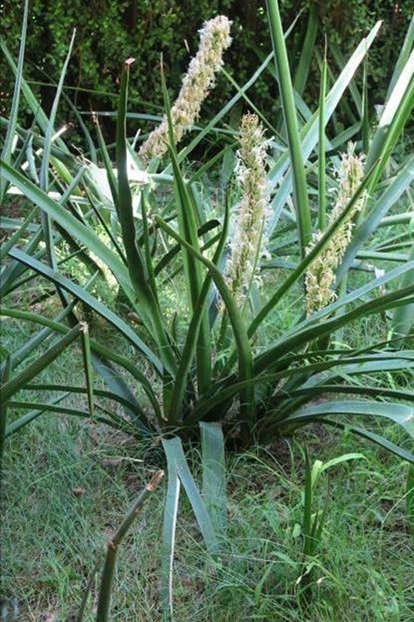| Protologue: |
Cactus and Succulent Journal (Los Angeles) 94(3): 143-145. |
| Etymology: |
The epithet refers to the type locality in the Malaba Hills of northern Kenya. |
| Subgenus: |
Sansevieria |
| Group: |
none |
| Distribution: |
Northern Kenya with a probable extension into southern Ethiopia. |
| Brief Description: |
The acaulescent, rhizomatous, and clumping perennial has 8 - 13 leaves in a rosette. The leaves are spreading, flexible but slightly stiff, lanceolate and 130-145 cm long by 3-5.5 cm wide. The widest part of the leaf is about halfway from the base to the somewhat sharp tip, and the leaf is shallowly grooved. Both surfaces are dark green with little if any mottling or banding, and the upper surface is mostly smooth whereas the lower surface is slightly roughened with a keel. The leaf margin is red-brown with a slightly shredding whitish edge. The inflorescence is 79-98 cm tall and simple with 4 - 8 flowers per cluster. |
| Similar Species: |
This is a rather unique species owing to its strap-like, slightly stiff leaves. Sansevieria malabensis could be related to some of the species from Uganda, particularly Sansevieria newtoniana and S. conduplicata, but those species tend to either have lighter-colored or stiffer leaves. Sansevieria malabensis cannot be confused with any other species from East Africa. |
| |
| |

Sansevieria malabensis in flower and in cultivation at Suyian Farm, Kenya.
|

